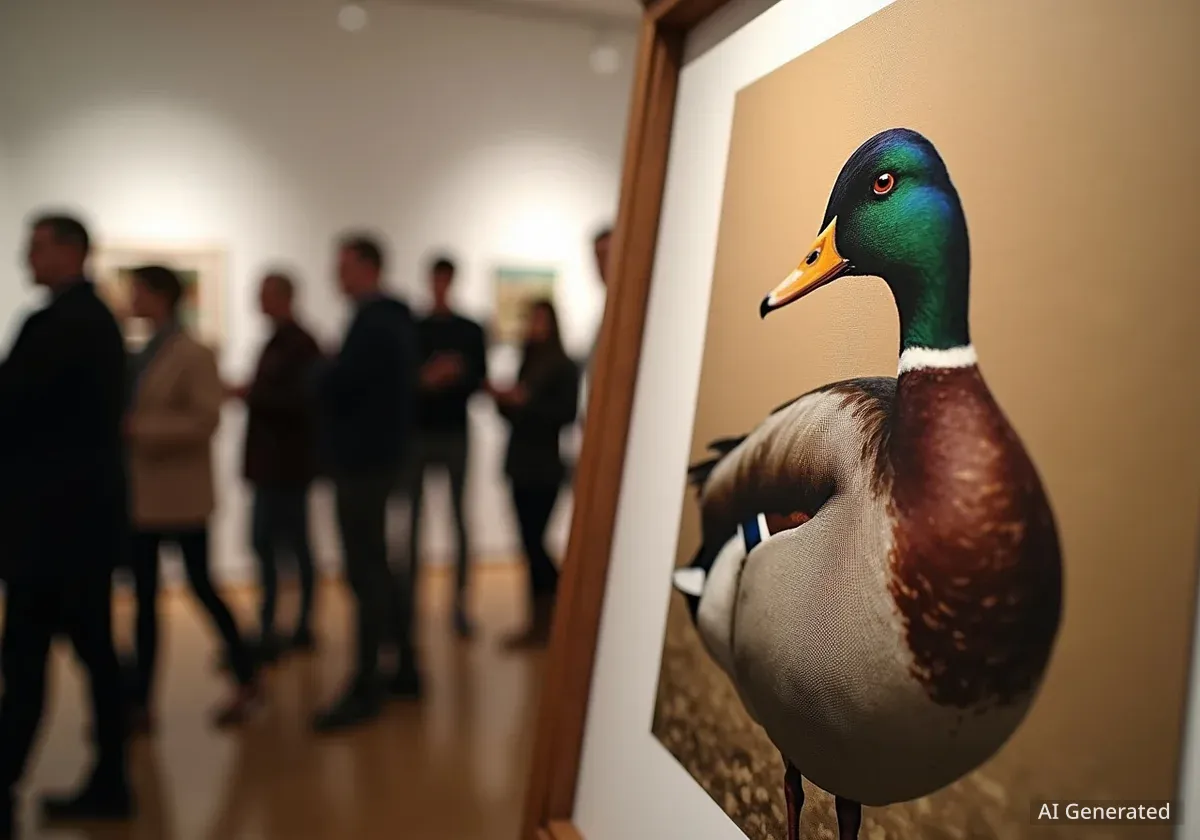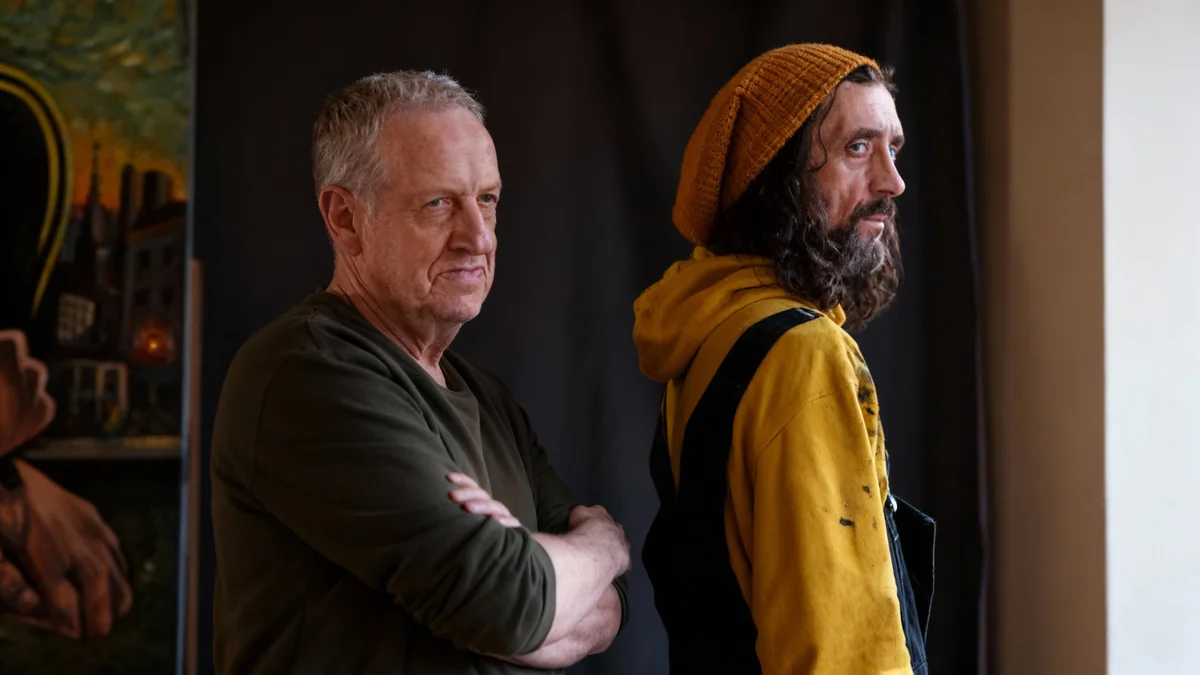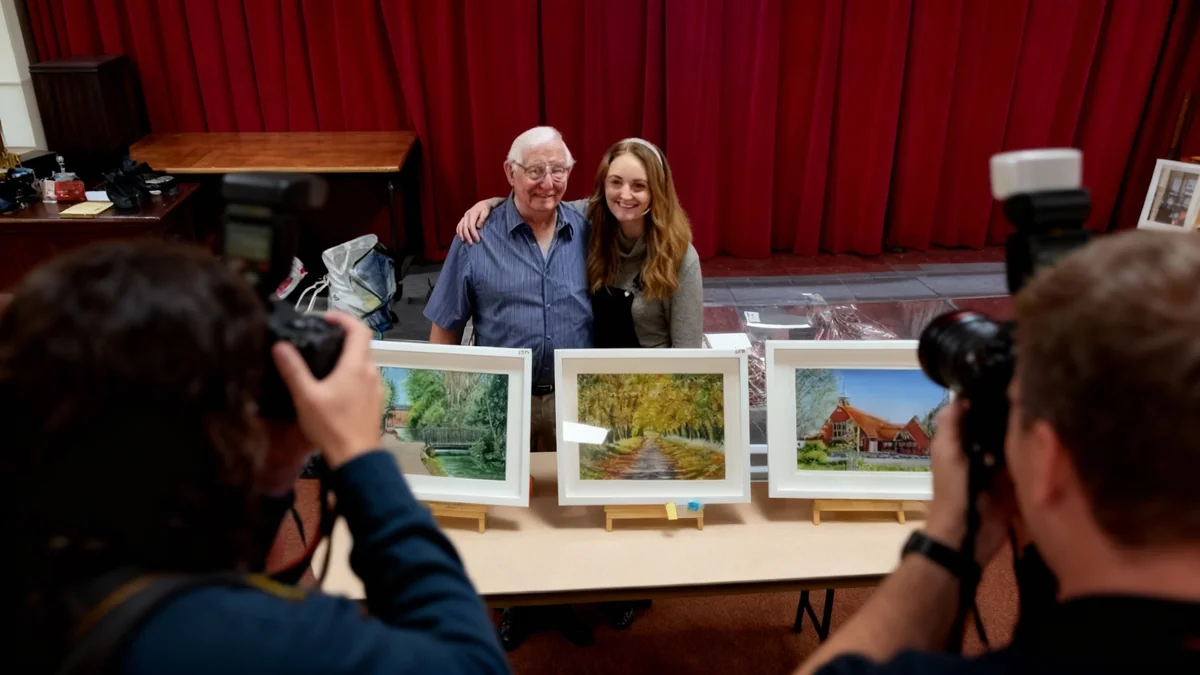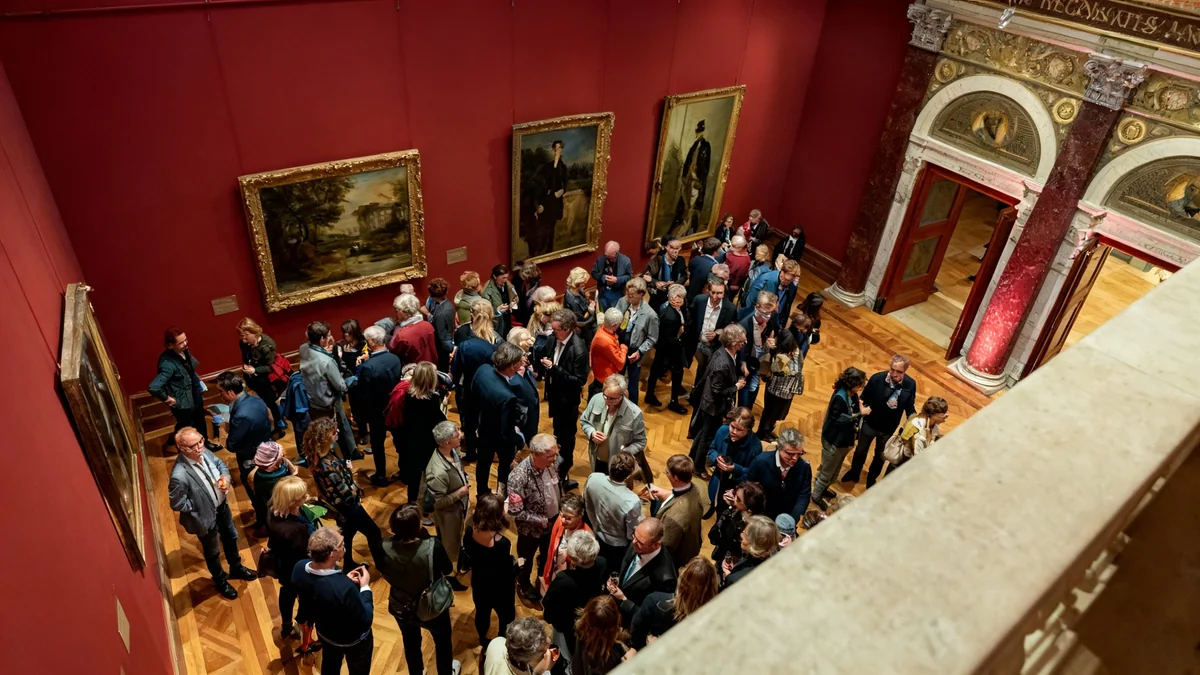Artists from across the United States gathered in Laurel, Maryland, in mid-September for the annual Federal Duck Stamp Art Contest. This event is a significant competition in the wildlife art community. Participants aim to have their detailed waterfowl paintings featured on the Federal Duck Stamp, a required license for waterfowl hunters. The contest highlights both artistic skill and a critical conservation effort.
Digital Producer Emma Gometz attended the 2025 competition. Gometz observed the intense atmosphere and spoke with artists about their dedication. The event is more than just an art show; it is a key part of funding wildlife habitat preservation.
Key Takeaways
- The Federal Duck Stamp Art Contest is a major annual event for wildlife artists.
- Winning artwork appears on the Federal Duck Stamp, a hunting license.
- Proceeds from stamp sales directly support wetlands conservation.
- Artists spend hundreds of hours on their detailed waterfowl paintings.
- The competition fosters a strong community among wildlife artists.
The Importance of the Federal Duck Stamp Program
The Federal Duck Stamp program began in 1934. It is one of the most successful conservation programs in the world. The program requires all waterfowl hunters aged 16 or older to purchase a Federal Duck Stamp annually. This simple requirement generates millions of dollars for wildlife habitat protection.
According to the U.S. Fish and Wildlife Service, more than $1.2 billion has been raised through stamp sales since the program's inception. These funds have been used to conserve over 6.5 million acres of wetland habitat. This land provides critical breeding grounds, migration stopovers, and wintering areas for waterfowl and other wildlife.
Did You Know?
Ninety-eight percent of the revenue from Federal Duck Stamp sales goes directly to the Migratory Bird Conservation Fund. This fund acquires and protects wetlands and wildlife habitat for the National Wildlife Refuge System.
The Artistic Challenge and Dedication
The Federal Duck Stamp Art Contest is unique. It is the only art competition sponsored by the U.S. government. Artists submit paintings of North American waterfowl. The rules are strict, focusing on realism and biological accuracy. Each entry must feature one of the five species of waterfowl chosen for that year's contest.
"This isn't just about painting a pretty duck. It's about capturing the essence of the bird, its habitat, and making sure every feather is correct," explained one veteran artist, Michael Kensinger, standing before a gallery of entries. "The judges look for scientific precision as much as artistic merit."
Artists often dedicate hundreds of hours to a single painting. They study waterfowl behavior, anatomy, and environment. Many visit refuges to observe birds in their natural settings. The level of detail required is immense, from the texture of feathers to the reflections in the water.
Preparation and Rules
The contest has specific regulations that artists must follow. These rules cover everything from acceptable species to size and medium. For example, entries must be 7 inches by 10 inches, in a horizontal format. Digital art is not allowed; all entries must be hand-painted.
This strict adherence to rules ensures fairness and maintains the high standard of the program. Artists must be careful about every detail. Even a small error in feather count or species identification can lead to disqualification.
Background on Waterfowl Conservation
Waterfowl populations faced significant threats in the early 20th century due to habitat loss and overhunting. The Federal Duck Stamp Act of 1934 was a direct response to these declines. It provided a stable funding source for wetland acquisition and restoration, proving highly effective in reversing population trends.
The Contest Day: Drama and Community
The judging process is rigorous. A panel of five experts evaluates the entries over two days. Judges include ornithologists, art critics, and conservationists. They score paintings based on anatomical accuracy, artistic composition, and suitability for reproduction as a stamp.
The atmosphere at the contest is often described as a mix of intense competition and strong camaraderie. Artists share tips, discuss techniques, and support each other. Despite the high stakes, many view the event as a reunion for a specialized community.
- Day 1: Initial rounds of judging narrow down hundreds of entries.
- Day 2: Finalists are judged, and the winner is announced.
The announcement of the winner is a highly anticipated moment. For the chosen artist, it means national recognition and a significant boost to their career. Their artwork will be seen by millions of people across the country.
Beyond the Winning Painting
Even for artists who do not win, participating in the contest is valuable. It provides exposure, feedback, and a chance to connect with peers. Many artists continue to enter year after year, driven by their passion for wildlife art and conservation.
The contest also serves as a platform to raise public awareness. It reminds people about the beauty of waterfowl and the ongoing need for conservation efforts. The stamp itself becomes a miniature piece of art that travels across the nation.
Conservation Beyond Waterfowl
While the Federal Duck Stamp focuses on waterfowl, its benefits extend to many other species. Wetlands are vital ecosystems supporting a wide array of plants and animals. These include various birds, mammals, amphibians, and fish.
Protecting these habitats also helps improve water quality and control flooding. The success of the duck stamp program demonstrates how a small investment can yield large environmental returns. It is a model for other conservation initiatives.
The annual contest ensures a continuous flow of new, engaging artwork for the stamp. This keeps the program fresh and continues to attract support for its conservation goals. The artists' dedication is a testament to the program's enduring legacy.




